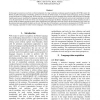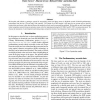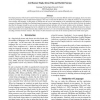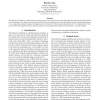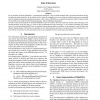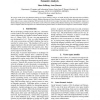LREC
2008
14 years 28 days ago
2008
In this paper we present an overview on the development of a large vocabulary continuous speech recognition (LVCSR) system for Khmer, the official language of Cambodia, spoken by ...
LREC
2008
14 years 28 days ago
2008
We report on the construction of a gold-standard dataset consisting of annotated clinical notes suitable for evaluating our biomedical named entity recognition system. The dataset...
LREC
2008
14 years 28 days ago
2008
We describe and evaluate a prototype system for recognising person and place names in digitised records of British parliamentary proceedings from the late 17th and early 19th cent...
LREC
2008
14 years 28 days ago
2008
Distributional, corpus-based descriptions have frequently been applied to model aspects of word meaning. However, distributional models that use corpus data as their basis have on...
LREC
2008
14 years 28 days ago
2008
Terminology extraction commonly includes two steps: identification of term-like units in the texts, mostly multi-word phrases, and the ranking of the extracted term-like units acc...
LREC
2008
14 years 28 days ago
2008
Developing resources which can be used for Natural Language Processing is an extremely difficult task for any language, but is even more so for less privileged (or less computeriz...
LREC
2008
14 years 28 days ago
2008
The influence of English as a global language continues to grow to an extent that its words and expressions permeate the original forms of other languages. This paper evaluates a ...
LREC
2008
14 years 28 days ago
2008
The objective of the Semiotic-based Ontology Evaluation Tool (S-OntoEval) is to evaluate and propose improvements to a given ontological model. The evaluation aims at assessing th...
LREC
2008
14 years 28 days ago
2008
We are currently developing MiniSTEx, a spatiotemporal annotation system to handle temporal and/or geospatial information directly and indirectly expressed in texts. In the end, t...
LREC
2008
14 years 28 days ago
2008
We present results from using Random Indexing for Latent Semantic Analysis to handle Singular Value Decomposition tractability issues. We compare Latent Semantic Analysis, Random ...
